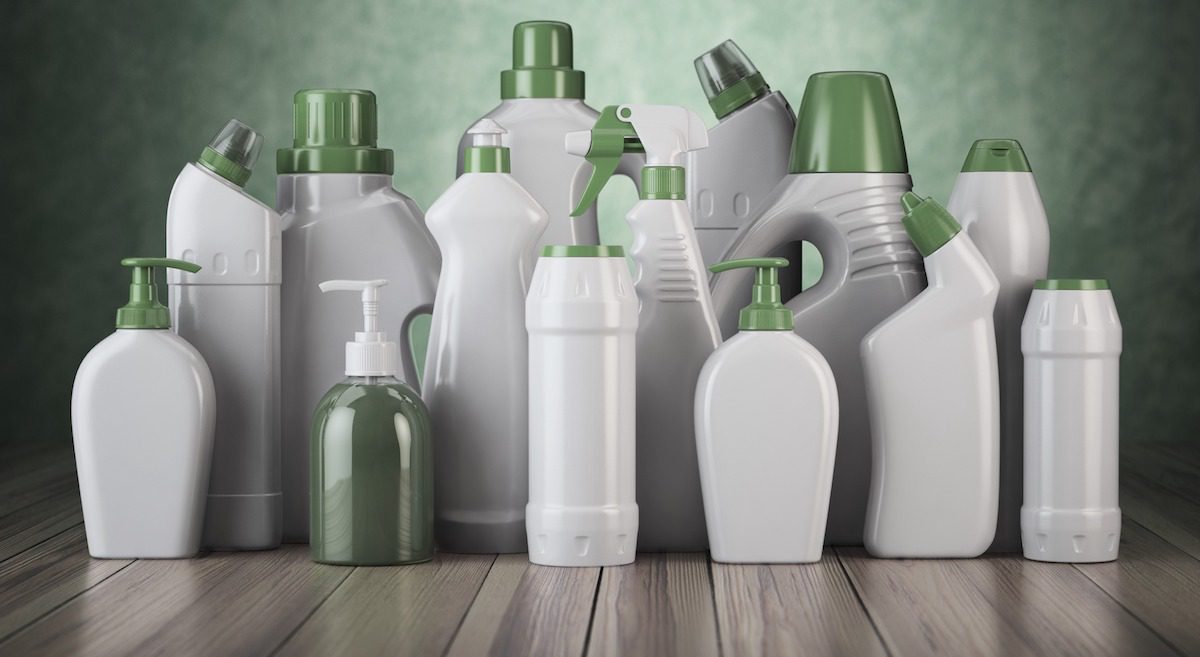What is Green Cleaning: Everything You Need to Know

Green cleaning is a movement growing in popularity over the past few years. It's an effort to make cleaning products and practices more environmentally friendly, reducing the use of hazardous chemicals in favor of using natural or less harmful ingredients whenever possible.
But what does green cleaning involve? And what are the benefits for businesses?
What is Green Cleaning?
Green cleaning uses eco-friendly, non-toxic, or biodegradable solutions for cleaning both indoor and outdoor spaces. It emphasizes waste reduction, water conservation, and sustainable products. Green cleaning products typically have the following characteristics:
- No phosphates
- No chlorine
- No artificial fragrances
- No artificial colors
- Biodegradable or recyclable packaging
- Organically grown ingredients using sustainable farming practices
How "Green" are Green Products?
Not all green products are created equal. To be considered truly environmentally friendly, a product must meet several criteria, including the following:
- The product must be safe for both people and the environment.
- The product must not contain any harsh chemicals or toxins.
- Third, the product must biodegrade wholly and quickly.
- Finally, the product should be packaged in recyclable materials.
- Green cleaning products that meet all of these criteria are considered "ultra-green."
Benefits of Using Green Cleaning Products For Businesses
There are many benefits of green cleaning for businesses. Some of the most notable include: reduced environmental impact, lower costs associated with waste disposal, improved indoor air quality, and increased employee productivity. In addition, green cleaning can help businesses comply with environmental regulations and earn LEED certification.
Reduced environmental impact
The manufacture and use of traditional cleaning products can negatively impact the environment. This is because these cleaning products often contain harmful chemicals that can pollute water supplies, can damage ecosystems, and contribute to climate change. Eco-friendly cleaning products, on the other hand, are made from natural, sometimes organic ingredients, which are safer for both people and the environment. For example, microbial surfactants—the main ingredient in many green cleaning products—are made from renewable resources and break down quickly into harmless natural elements.
Lower costs associated with waste disposal
Businesses that adopt green cleaning practices can reduce their waste disposal costs by up to 50%. Green cleaners are often more effective than traditional cleaners, meaning less product is needed to achieve desired results. In addition, many green cleaners can be used in multiple ways, eliminating the need for separate products for different tasks.
Improved indoor air quality
Indoor air pollution is one of the leading causes of respiratory problems and can be a significant health hazard for employees. Green cleaning products are low in Volatile Organic Compounds (VOCs), which are known to cause adverse health effects (think standard aerosol cleaners). As a result, using greener cleaning products can help improve air quality and reduce the risk of respiratory illness among employees.
Increased employee productivity
Poor indoor air quality has been linked to decreased employee productivity. By contrast, studies have shown that employees working in environments with good indoor air quality are more productive and have higher morale. Green cleaning can help businesses create a healthy and productive work environment for their employees.
Cost Savings From Switching To Green Cleaning Products
Green cleaning products typically cost less than traditional cleaning products. This is because green cleaners are made from natural ingredients, which are often cheaper than synthetic chemicals. In addition, many green cleaning products are packaged in recyclable materials, further reducing the cost.
Compliance with environmental regulations
Many governments worldwide have introduced regulations to restrict the use of hazardous chemicals in favor of safer alternatives. Businesses that adopt green cleaning practices can comply with these regulations and avoid costly fines.
LEED certification
The Leadership in Energy and Environmental Design (LEED) rating system is the most widely recognized certification for Green Buildings. Businesses that achieve LEED certification demonstrate their commitment to sustainability and the environment. Green cleaning can help companies to achieve this certification and may be a requirement for some projects.
Evaluating Green Cleaning Products
When considering switching to green cleaning products, it is crucial to evaluate each product on its own merits. Not all "eco-friendly" cleaners are created equal. Some products may be less effective than traditional cleaners or contain harmful chemicals. It is essential to read the labels and do your research before purchasing.
Cleaning products can be challenging to assess for toxicity. Some products are clearly labeled, but many aren't. Then, there are challenges with "greenwashing" - when a company promotes their product as being environmentally friendly, but it's not.
But fear not! Many independent, third-party organizations can help you decide which products to use. Two of the most well-known are Green Seal and EcoLogo.
- Green Seal is a nonprofit organization that's been around since 1989. They award their seal of approval to products that meet rigorous environmental standards, including reduced toxicity.
- EcoLogo, recently acquired by UL, is a certification from the Environmental Protection Agency (EPA). It has been around since 1992 and is the longest-running program of its kind.
- The EPA also has its program for certifying green cleaning products. The EPA's Green Cleaning Program, Safer Choice, evaluates products based on environmental performance, human health and safety, and toxicity.
Both of these organizations are valuable resources for anyone looking to make more environmentally responsible choices for cleaning products.
In conclusion, there are many benefits to green cleaning for businesses. It can help reduce environmental impact, lower costs associated with waste disposal, improve indoor air quality, and increase employee productivity. In addition, it can help businesses comply with environmental regulations and earn LEED certification.

